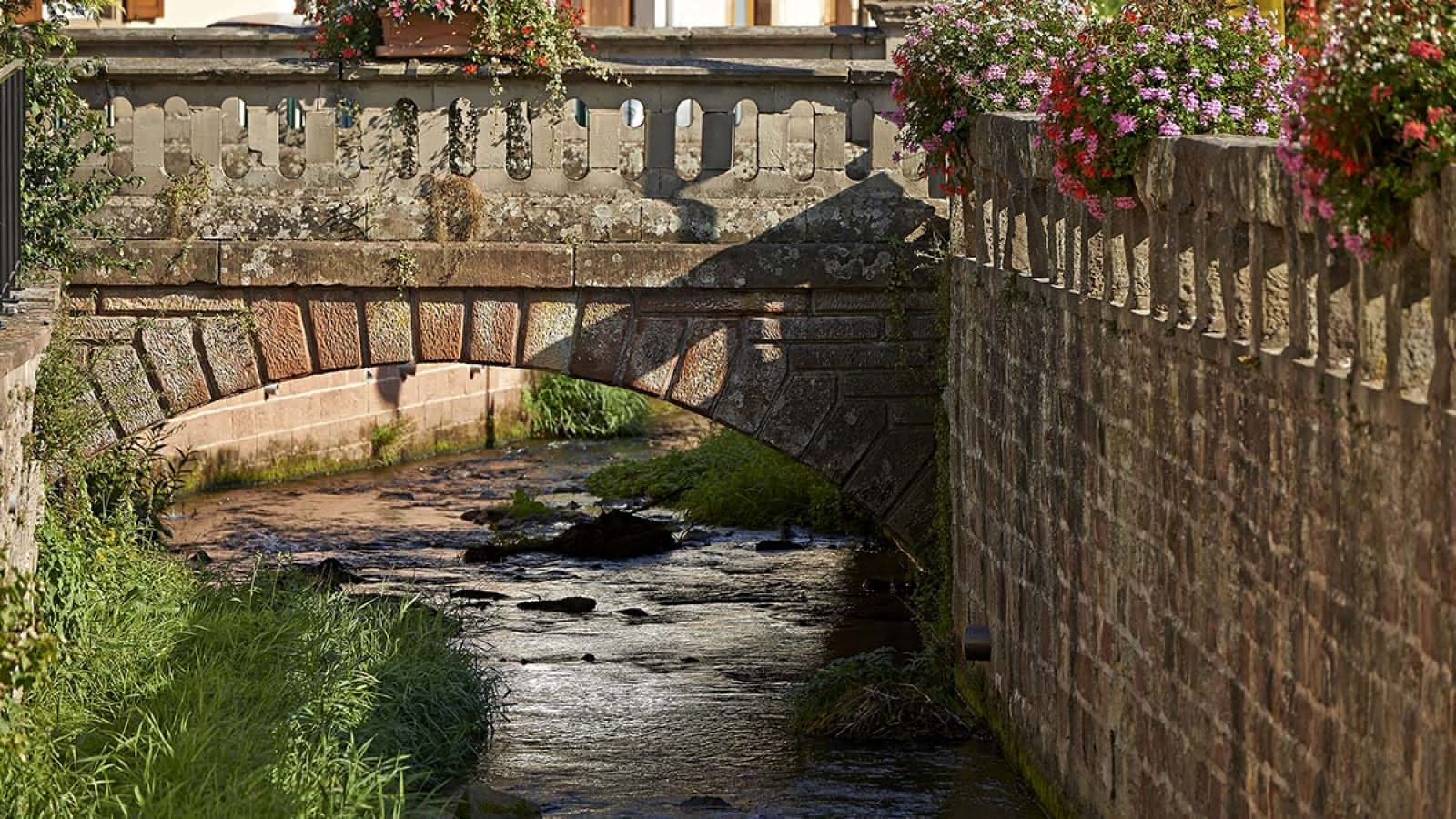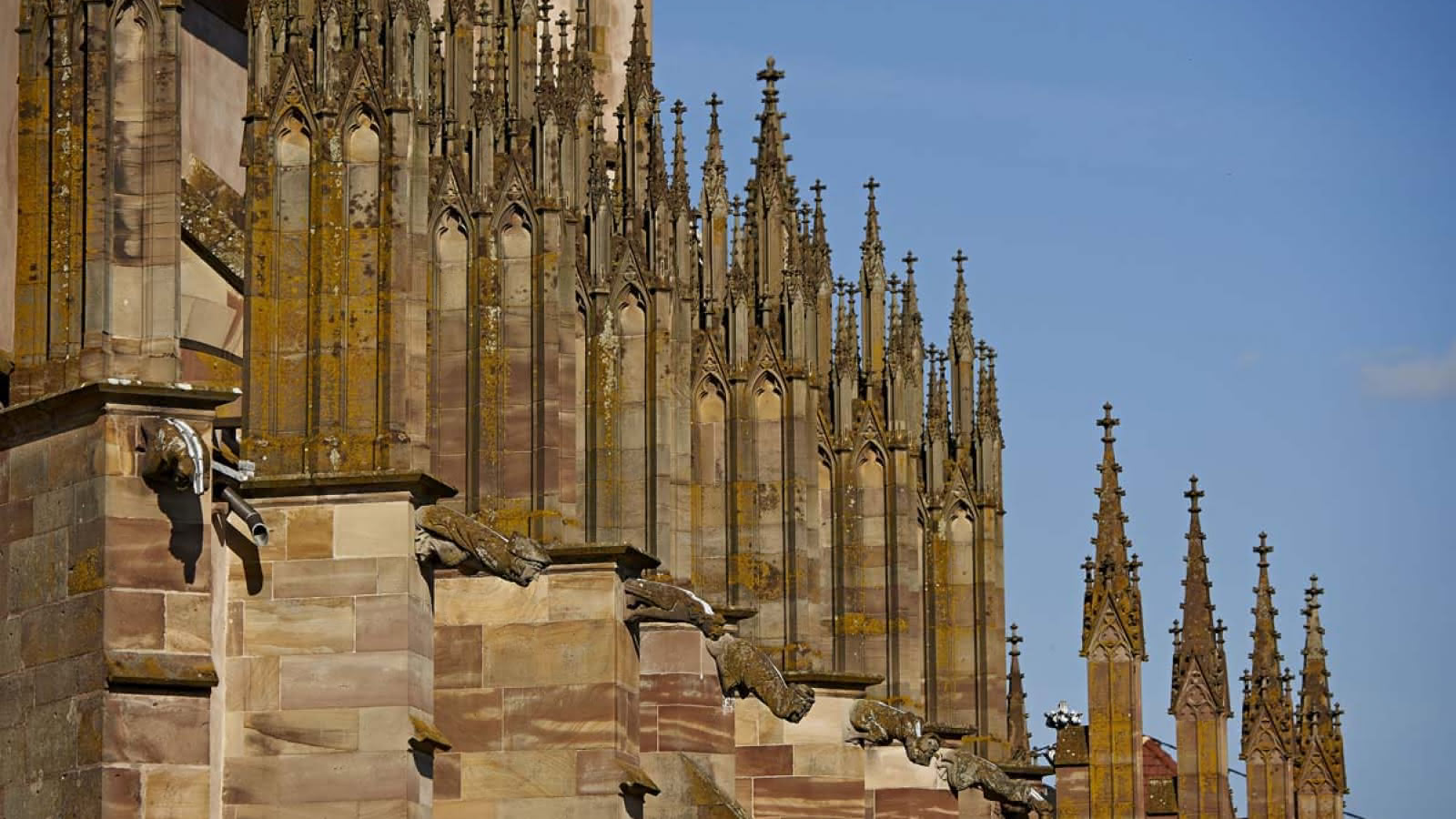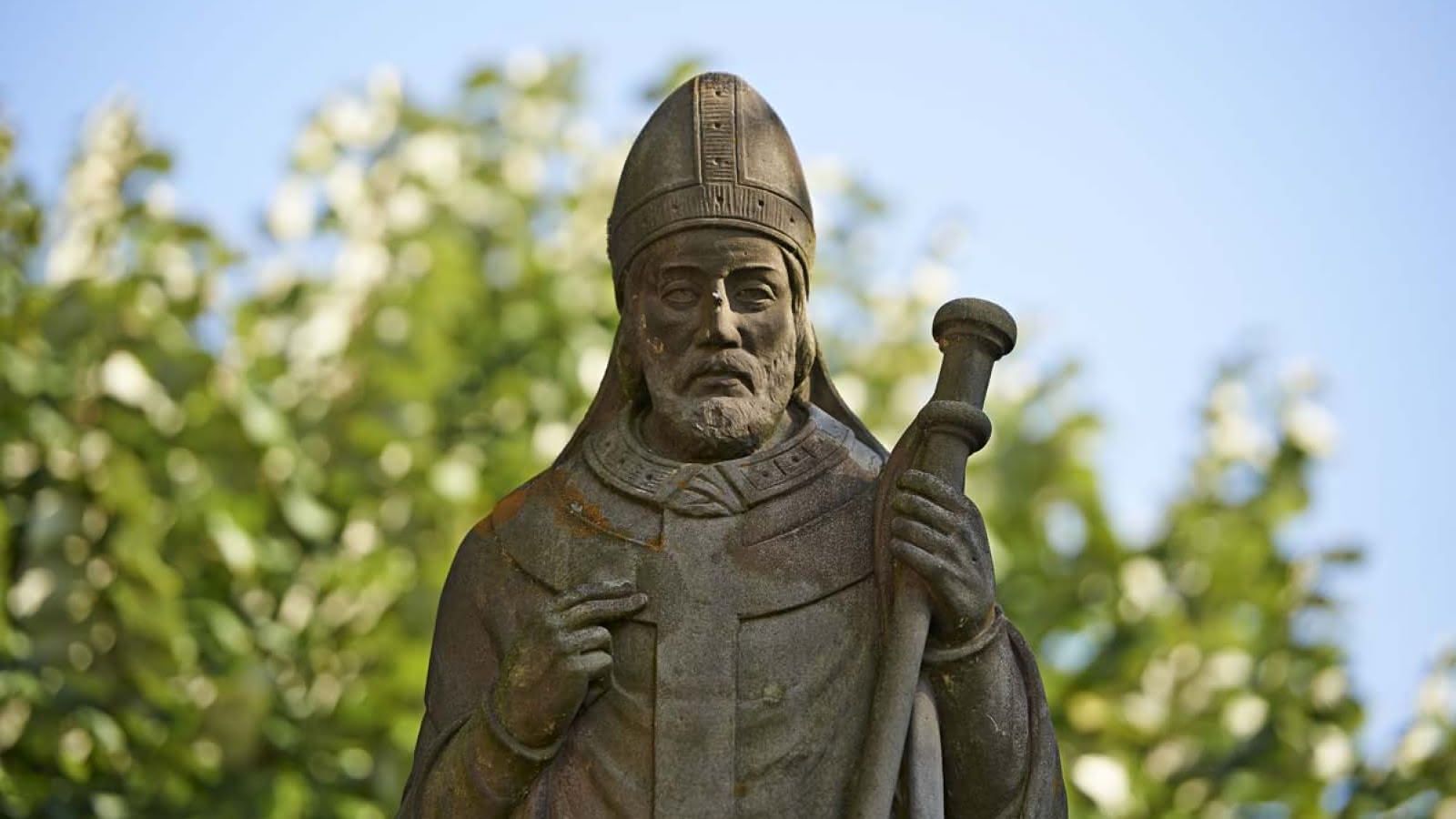Niederhaslach, a stroll along the centuries
- 1h
- 2km
- Easy
Nesting in the lush valley of the Hasel, the traditional village of Niederhaslach, well known for its beautiful 13th - 14th century gothic collegiate church, invites to stop by and discover its many riches.
This tour of the village is an invitation to discover the different styles of architecture co-existing in Niederhaslach. Stone houses with beautiful quoins stand next to cob and timber frame houses, or Vosgian-style houses. The Swiss immigrants' influence is also prevalent, with the existence of open-type barns, called "Schopf".
Some history:
Although the site has been populated since time immemorial (the valley was an important Roman road used to cross the Vosges Mountain range), the actual birth of the village goes back to St. Florian. He founded in this very place a monastery and later became the successor of St. Arbogast to the Episcopal See of Strasbourg, between the 6th and the 7th centuries. After the transfer of the relics from Strasbourg to Haslach (on November 7, 810), the site turned into an important site of pilgrimage, which it still is today (on the first Sunday in November, after the 6th).
During the 11th century, the monks were replaced by canons who in turn established the Chapter of Haslach, which existed until the Revolution came. The abbey was transformed into a collegiate church and canonries (such as a mill, smithies, a sheep pen, public bath houses, or a tithe barn) were built around it.
Haslach belonged to the Episcopal grounds and, as such, possessed its own court which had jurisdiction over several villages. The "Advocate" (the Bishop's representative) presided over the proceeding, aided by 14 aldermen. They met three times a year.
Forestry development and the sandstone quarry were the two main sources of income for the inhabitants, next to agriculture.
- Type of hiking trail : paved road




